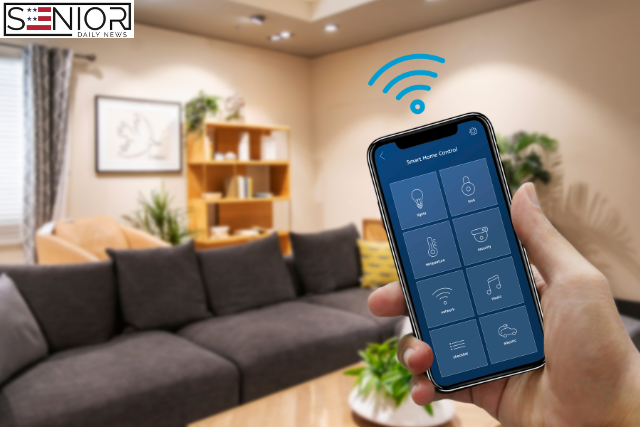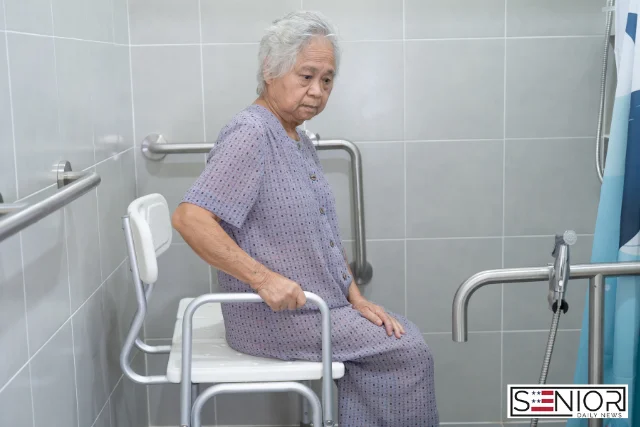Empowering Independence: How Smart Home Technology Supports Seniors with Specific Health Conditions

The golden years should be a time of comfort, autonomy, and continued engagement with life. However, for seniors managing specific health conditions, everyday tasks can present unique challenges. Fortunately, the rise of smart home technology offers an increasingly powerful toolkit to support independent living, enhance safety, and improve overall quality of life. This comprehensive guide explores the various ways smart devices and systems can be tailored to meet the needs of seniors with diverse health concerns, fostering a sense of control and security in their own homes.
Many seniors live with chronic health conditions that can impact their ability to perform daily activities. These conditions might include mobility limitations due to arthritis or Parkinson’s disease, cognitive impairments like Alzheimer’s or dementia, sensory deficits such as vision or hearing loss, or chronic illnesses like diabetes or heart disease that require careful monitoring. Maintaining independence despite these challenges is often a top priority for seniors, contributing significantly to their emotional well-being and self-esteem. Smart home technology can play a crucial role in bridging the gap, providing personalized support that adapts to individual needs and evolving health conditions.
Smart Home Solutions: A Personalized Approach to Care
The beauty of smart home technology lies in its versatility and ability to be customized. Here are some key areas where smart devices can make a tangible difference for seniors with specific health conditions:
1. Enhanced Safety and Security:
- Smart Lighting: Motion-activated lights can illuminate pathways at night, reducing the risk of falls, especially for seniors with vision impairments or mobility issues. Voice-controlled lighting eliminates the need to fumble for switches.
- Smart Locks: Keyless entry systems with PIN codes or smartphone control offer convenience and security, particularly for those with arthritis or memory problems who might struggle with keys. Remote locking capabilities allow caregivers to ensure doors are secured.
- Fall Detection Devices: Wearable devices or in-home sensors can automatically detect falls and alert caregivers or emergency services, providing crucial assistance in critical situations. These are invaluable for seniors with balance issues or a history of falls.
- Emergency Alert Systems: Smart panic buttons or voice-activated emergency calls provide a quick and easy way for seniors to summon help in case of a medical emergency or feeling unwell.
- Smart Security Cameras: Indoor and outdoor cameras allow seniors and their caregivers to monitor the home remotely, providing peace of mind and the ability to check on well-being.
2. Medication Management and Health Monitoring:
- Smart Pill Dispensers: These devices can dispense the correct medication at the right time, with reminders and alerts for missed doses. This is particularly helpful for seniors managing multiple medications or experiencing memory challenges.
- Wearable Health Trackers: Smartwatches and fitness trackers can monitor vital signs like heart rate, sleep patterns, and activity levels, providing valuable data for seniors and their healthcare providers. Some can even detect irregularities and send alerts.
- Smart Scales: Wi-Fi enabled scales can track weight and body composition, which can be important for managing conditions like heart failure or diabetes. Data can be automatically shared with caregivers or healthcare teams.
- Remote Patient Monitoring Systems: More advanced systems can monitor blood pressure, blood glucose levels, and other vital signs remotely, allowing healthcare professionals to track a senior’s condition and intervene proactively if needed.
3. Cognitive Support and Memory Assistance:
- Smart Displays with Voice Assistants: Devices like Amazon Echo Show or Google Nest Hub can provide reminders for appointments, medication, and daily tasks. They can also be used for video calls with family and friends, reducing social isolation.
- Smart Photo Frames: These devices can display a rotating collection of familiar photos, which can be comforting and help trigger memories for seniors with cognitive decline.
- GPS Trackers: For seniors prone to wandering due to dementia, GPS tracking devices worn as bracelets or placed in belongings can provide peace of mind for caregivers and aid in locating them if they become lost.
- Smart Home Automation Routines: Customized routines can automate daily tasks, such as turning on lights at a certain time or reminding the senior to eat meals, providing structure and reducing the cognitive load.
4. Enhanced Comfort and Accessibility:
- Smart Thermostats: Voice-controlled or automatically adjusting thermostats ensure a comfortable home temperature without the need for manual adjustments, which can be difficult for those with mobility issues.
- Smart Plugs: These can turn regular appliances into smart devices, allowing for voice control of lamps, fans, and other electronics, increasing convenience and safety.
- Voice-Activated Entertainment: Smart speakers and streaming devices allow seniors to easily access music, audiobooks, and movies without complex remote controls.
- Smart Blinds and Curtains: Automated window coverings can be controlled remotely or set on a schedule, making it easier to manage light and privacy.
Implementing Smart Home Technology: A Step-by-Step Approach
Introducing smart home technology to a senior’s life requires a thoughtful and patient approach:
- Assess Individual Needs: Understand the specific health conditions and challenges the senior faces. Identify areas where technology can provide the most significant benefit.
- Start Simple: Begin with one or two key devices that address the most pressing needs. Avoid overwhelming the senior with too much technology at once.
- Choose User-Friendly Devices: Select devices with intuitive interfaces, large buttons, and clear voice commands. Consider devices specifically designed for seniors.
- Provide Thorough Training: Offer clear and patient instructions on how to use the devices. Provide written guides and offer ongoing support.
- Involve Family and Caregivers: Encourage family members or caregivers to participate in the setup and support process. Remote monitoring and control features can be particularly helpful for caregivers.
- Prioritize Security and Privacy: Ensure that smart devices are properly secured and that the senior’s privacy is protected.
- Consider Professional Installation: For more complex setups, consider professional installation services that specialize in smart home technology for seniors.
- Regularly Review and Adapt: As the senior’s needs evolve, reassess the smart home setup and make adjustments as necessary.
The Human Touch: Technology as an Enabler, Not a Replacement
It’s crucial to remember that smart home technology is a tool to support independence, not a replacement for human interaction and care. The human touch remains essential for the emotional well-being of seniors. Technology should be integrated in a way that enhances their connection with loved ones and caregivers, rather than isolating them. Video calling features, shared monitoring apps, and remote support capabilities can actually strengthen these connections.
Conclusion: Embracing a Future of Independent Living
Smart home technology offers a powerful and personalized approach to supporting independent living for seniors with specific health conditions. By carefully selecting and implementing the right devices and systems, we can empower older adults to maintain their autonomy, enhance their safety, and improve their overall quality of life. As technology continues to advance, its potential to support our aging population will only grow, paving the way for a future where seniors can live more comfortably and independently in the homes they cherish.
Frequently Asked Questions (FAQs) about Smart Home Technology for Seniors with Health Conditions:
Q: Can smart home technology really help seniors with memory problems?
A: Yes, smart displays with reminders, automated routines for daily tasks, and smart photo frames can provide valuable cognitive support and help seniors with memory challenges maintain structure and familiarity. GPS trackers can also aid in safety if wandering is a concern.
Q: Is smart home technology difficult for seniors to learn and use?
A: While there can be a learning curve, choosing user-friendly devices with simple interfaces, large buttons, and voice control options is key. Thorough training, patient support from family or caregivers, and starting with a few essential devices can make the transition much smoother.
Q: What are the main safety benefits of smart home technology for seniors?
A: Key safety benefits include fall detection with automatic alerts, emergency panic buttons, remote monitoring by caregivers, smart lighting to prevent trips and falls, and smart locks for enhanced security.
Q: How can smart home technology help seniors manage their medications?
A: Smart pill dispensers provide timely reminders and dispense the correct medication. Voice assistants can also provide medication reminders.
Q: Are there privacy concerns associated with using smart home technology?
A: Privacy is a valid concern. It’s important to choose reputable brands with strong security features, understand how data is being collected and used, and adjust privacy settings accordingly. Educating seniors about these aspects is also crucial.
Q: How can family caregivers benefit from smart home technology used by their elderly loved ones?
A: Caregivers can benefit from remote monitoring through cameras and health trackers, receive alerts in case of falls or emergencies, remotely manage locks and lights, and communicate more easily through video calling features. This can provide peace of mind and allow for more proactive care.
Q: What is the best way to get started with smart home technology for a senior with health conditions?
A: Start by assessing the senior’s specific needs and identifying one or two key areas where technology can provide the most benefit. Choose user-friendly devices and provide thorough training and ongoing support. Involve family or caregivers in the process.
Q: Can smart home technology integrate with existing medical devices?
A: Increasingly, smart health trackers and remote patient monitoring systems can integrate with electronic health records and share data with healthcare providers, allowing for more coordinated care.
Q: What are some examples of affordable smart home devices that can benefit seniors?
A: Affordable options include smart plugs for controlling lamps and appliances, voice-activated smart speakers for reminders and communication, and basic wearable fitness trackers for activity and sleep monitoring.
Q: Where can I find help setting up smart home technology for a senior?
A: Family members, friends, or professional smart home installation services can provide assistance. Some organizations also offer support and guidance specifically for seniors adopting technology.
Image Designed Using Canva






